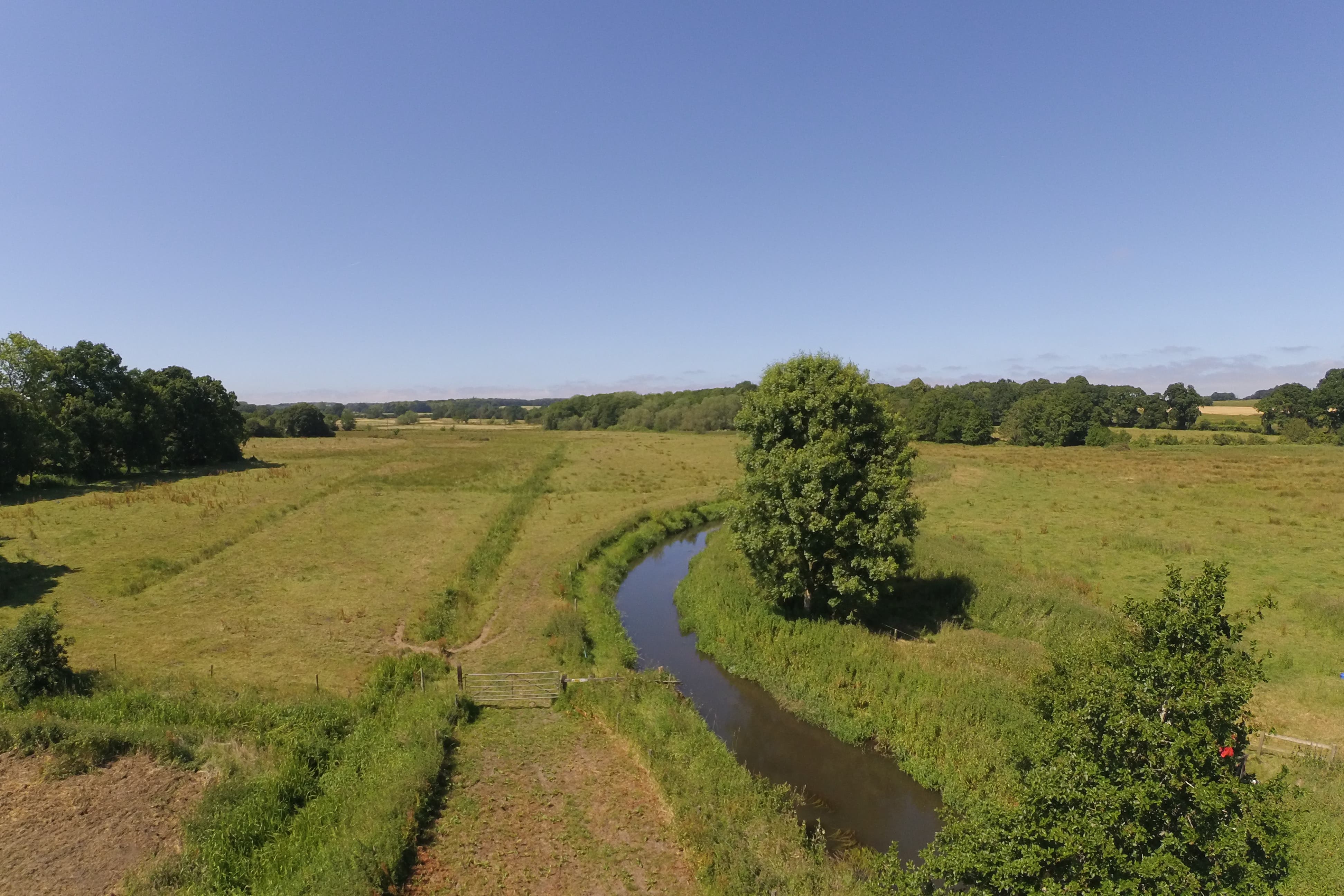Conservation project makes chalk stream more resilient to climate change
The stream on the Blicking Estate was returned to a more natural course and provides new habitats for insects, birds and mammals.

Your support helps us to tell the story
From reproductive rights to climate change to Big Tech, The Independent is on the ground when the story is developing. Whether it's investigating the financials of Elon Musk's pro-Trump PAC or producing our latest documentary, 'The A Word', which shines a light on the American women fighting for reproductive rights, we know how important it is to parse out the facts from the messaging.
At such a critical moment in US history, we need reporters on the ground. Your donation allows us to keep sending journalists to speak to both sides of the story.
The Independent is trusted by Americans across the entire political spectrum. And unlike many other quality news outlets, we choose not to lock Americans out of our reporting and analysis with paywalls. We believe quality journalism should be available to everyone, paid for by those who can afford it.
Your support makes all the difference.A six-mile stretch of a chalk stream that feeds into the Norfolk Broads has been given a new lease of life, with steps taken to make it more resilient to climate change during a conservation project.
The National Trust said chalk streams, which spring from underground chalk reservoirs, are one of the world’s rarest freshwater habitats, with only 220 known examples, the vast majority of which are in England.
A restoration project, which started in 2018, saw fallen trees and large branches used to return a section of an over-straightened and widened stream, part of the river Bure, to a more natural course.
This helps reduce flood risk by slowing the flow of the river during high rainfall events.
It also helped narrow the stream, which lies within the National Trust’s Blicking Estate, and create different speeds and directions in the flow, helping to oxygenate the water and clean the gravel and pebbles on the riverbed.
This boosts habitats for juvenile fish and invertebrates, such as dragonfly and mayfly larvae.
Invasive plants have also been cleared from the water, and more than 22,000 trees planted in the vicinity of the river to slow the speed at which water runs into the stream.
The trees also provide corridors for owls, woodpeckers and bats.
This work, together with the other steps we have taken, will give the Bure a whole new lease of life with cleaner water, slower flood peaks and a more diverse environment that provides the best possible conditions for the abundance of species relying on this very special habitat
New ponds and wetlands have also been created as part of the work, which was part of the conservation charity’s Riverlands programme in partnership with the Environment Agency and the Norfolk Rivers Trust.
Emily Long, Riverlands Project Manager, said: “Before the start of the project, the Bure was inundated by over 70 tonnes of Himalayan Balsam, which stifled the important native plants that this habitat needs to thrive.
“With the help of our fantastic volunteers, we were able to de-congest the river of invasive plants, allowing it to really breathe.
“This work, together with the other steps we have taken, will give the Bure a whole new lease of life with cleaner water, slower flood peaks and a more diverse environment that provides the best possible conditions for the abundance of species relying on this very special habitat.”
She said that they will next focus on water quality “working with farmers, and continuing our ambition to create a river and catchment that is healthy, clean and rich in wildlife”.
The new trees planted include alder, silver birch, hazel and black poplar.
Stuart Banks, Trees and Woodland Adviser for the National Trust, said: “We’ve selected the tree species based on predictions of a future climate in Norfolk.
“It’s getting warmer and drier in the East of England, and climate modelling software has enabled us to plan for a woodland that will thrive in changing conditions.
“As well as providing a habitat for insects, birds and mammals, these woodlands will help store water, keep landscapes and the river cool, clean the air, and sequester carbon.”